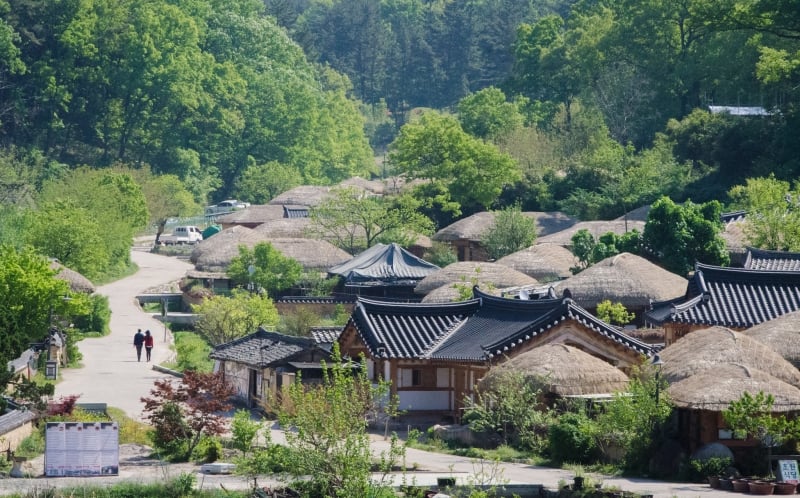
Often called the ‘museum without walls’, there is no argument that Gyeongju deserves the title as the ancient capital city of the 1,000 year long Silla Dynasty. At its peak, the Silla Dynasty controlled two-thirds of the Korean Peninsula between the 7th and 9th centuries. Till this day, several artifacts and cultural treasures remain in Gyeongju soil. In fact, Gyeongju is home to not just one, but several UNESCO World Heritage Sites and 31 National Treasures!
An absolute heaven for any history buff, there is bound to be something waiting to be discovered at every corner in Gyeongju. Whether it be royal tombs that look like gentle hills or the ruins of what used to be Korea’s largest temple, the ancient capital is overflowing with culture.
That being said, there is something for everyone. The Gyeongju Bird Park and Gyeongju Spring Dome are great places for family fun, and nature junkies will definitely enjoy the hike up Mount Namsan in Gyeongju National Park. While Seoul might offer an unforgettable city experience, Gyeongju can definitely shed some light on how Korea became the country that we see today. Read on to see what this ancient Silla capital has to offer!
1. Revisit the golden age of Buddhist architecture
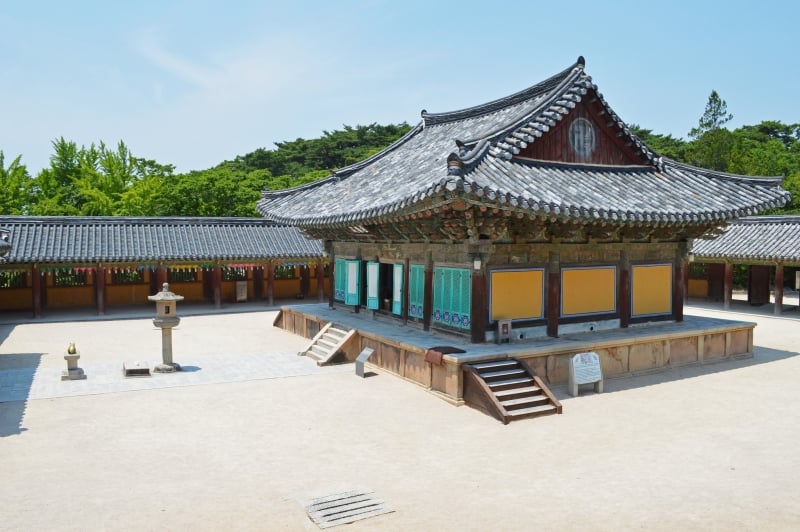
Image credit: Laura Pontiggia
Originally built in 528 during the Silla Dynasty, Bulguksa Temple was later rebuilt by Kim Dae Seong (700-774) in the year 751. Kim was a chief minister in the Silla Kingdom, and in a story of filial piety; it is said that he built Bulguksa in memory of his parents of the current life and Seokguram grotto as a tribute to his parents of his former life.
The temple is accepted as the epitome of Buddhist architecture, with colorful tiles decorating the underside of the roof and large statues of the Four Heavenly Kings at the entrance. The temple was recognized as a UNESCO World Heritage Site in 1995 and remains active till today, with temple monks chanting and performing Buddhist rituals in every hall. On top of its rich history, Bulguksa also encompasses seven of South Korea’s national treasures. Simply take a walk on the temple grounds to transport yourself back in time to the Silla Dynasty!
For an even more immersive experience and the chance to do justice to the countless age-old pagodas enshrined in the temple grounds, opt for an overnight temple stay!
2. Pay homage to a 1,000-year-old Buddha

Image credit: Nabin Rai
After visiting Bulguksa Temple, why not take a hike (or bus) to Seokguram Grotto, home to Korea’s most treasured Buddhist sculpture? On a sunny day, you’ll be rewarded with a beautiful view overlooking Gyeongju; and on a rainy day, the top of the mountain will be clouded in cooling mist.
Although constructed as part of Bulguksa in 751 and completed in 774, Seokguram was abandoned for centuries until its rediscovery in 1909. The stone Buddha now remains behind protective glass to preserve it in its original state. Pictures are not allowed, so it’s best if you visit Seokguram yourself to revel in the Buddha’s glory. However, once a year on Buddha’s birthday, visitors are allowed to venture beyond the glass and see Buddha up close!
3. Take a stroll in a park…of tombs
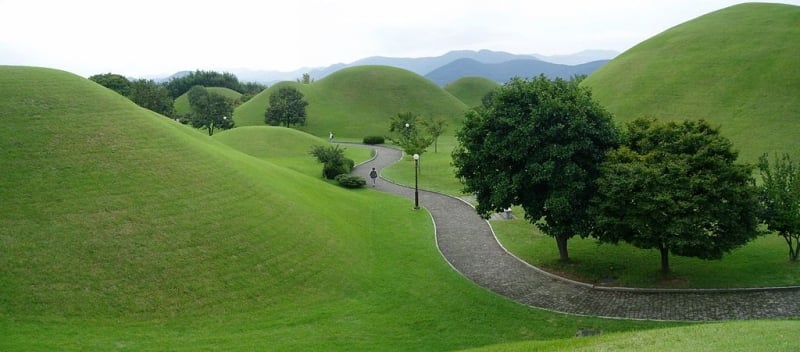
Image credit: Panoramio
While Egypt might have pyramids, Korea has tumuli. Don’t be fooled into thinking that this area comprises of natural hilly terrain. Instead, they are burial mounds of the Silla Kingdom’s elite ruling class. Gyeongju’s Tumuli Park consists of 23 large tombs, the most famous being that of Cheonmachong and Hwangnam Daechong.
During an excavation in the 1970s, a painting of a mounted horse was discovered inside the tomb of Cheonmachong, which remains the only discovered painting from the Silla Dynasty to date. Hwangnam Daechong, on the other hand, is a double-humped tumulus that houses both a King and Queen. Visitors have the opportunity to enter Cheonmachong’s tomb, so step inside and explore the final resting ground of the Silla elite yourself.
4. Marvel at the oldest existing astronomical observatory in East Asia
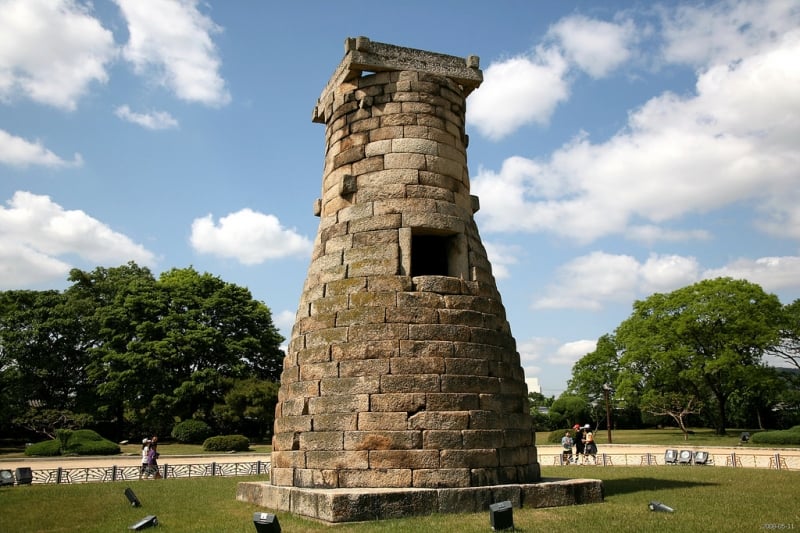
Image credit: Jinho Jung
It’s no surprise that the Cheomseongdae observatory tower is also a National Treasure, considering how rich in culture and history Gyeongju is. Built during the reign of Queen Seondeok (632-647), the first Queen of Silla, Cheomseongdae has managed to retain its original shape and form for over 1,300 years. This makes it the oldest existing astronomical observatory in the whole of East Asia! You’ll be able to envision how the ancient Silla people used this tower to observe the stars and forecast the weather.
Pro-tip: The observatory tower is located near the Tumuli Park and is a popular site for kite-flying! Get a kite for ₩5,000 (~S$6) and enjoy flying it while you’re there.
5. Bask in the serenity at Woljeonggyo Bridge
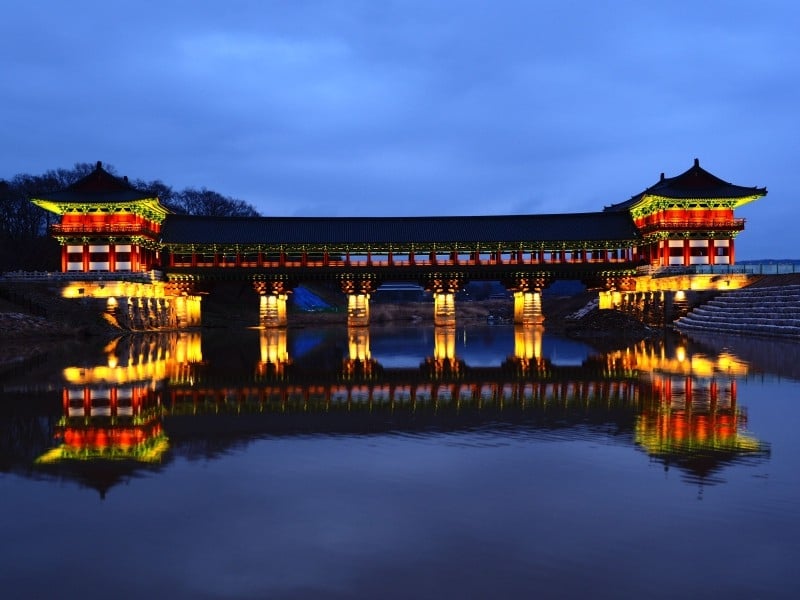
Image credit: slowwalker
Nothing can be more majestic than the Woljeonggyo Bridge lighting up as dusk falls onto Gyeongju. Originally erected in 760, the bridge was completely destroyed with only historical documents describing its beauty. However, an excavation in the river revealed pieces of the bridge’s original stonework, allowing researchers to create a reconstruction of the Wolgeonggyo Bridge that existed during the Silla Dynasty. The Woljeonggyo Bridge that we see today in Gyeongju is a replica of the original and a details elaborate Silla architecture.
Drop by a cafe near the bridge and take in the sights with a cup of tea in hand as night falls. Make a point to come in spring and you’ll be rewarded with an even better view when the cherry blossoms lining the river bloom!
6. Experience life in ancient Silla at one of Gyeongju’s traditional villages

Image credit: cotaro70s
Ever wondered how it was like living in ancient Silla? Well, be sure to pop by Yangdong Village or Gyochon Hanok Village for a slice of that life!
Touted as Korea’s largest traditional village, Yangdong Village has been home to the Wolseong Son family and the Yeogang Lee family for over 500 years. Hailing from the Joseon dynasty, Yangdong Village is saturated with traditional Joseon culture and has been recognized as another one of Gyeongju’s many UNESCO World Heritage Sites. The 200-year-old houses are sure to transport you back in time!
For those interested in trying something new, head to the Gyochon Hanok Village to visit the House of the famous Choi Clan and try some of their famous Gyeongju traditional Beopju liquor. Time to get buzzed on something other than soju!
7. Explore the Crown Prince’s former palace grounds
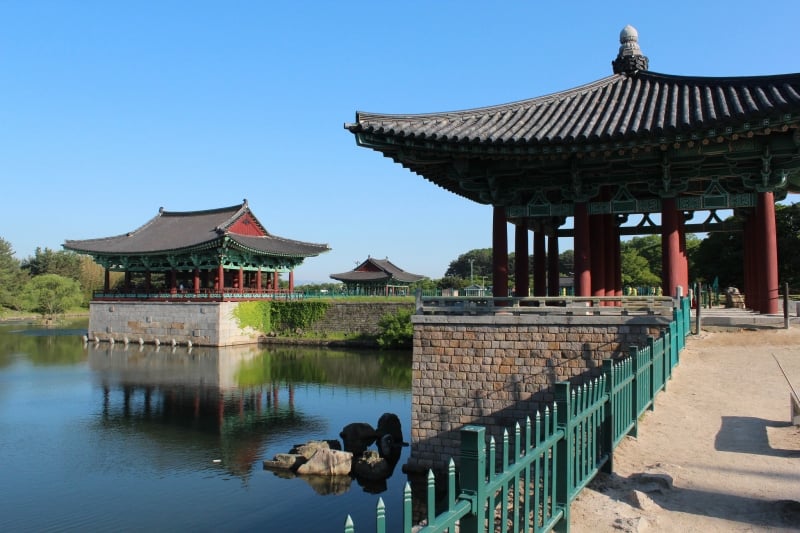
Image credit: Vanessa Bouissou
Donggung Palace sits at the northeast edge of the Royal Silla family’s main palace grounds and used to be the Crown Prince’s palace. After the fall of Silla, the site was abandoned and forgotten. However, as part of Gyeongju’s renovation project for historic sites in 1974, three palace buildings were restored and the pond was dredged. The excavation brought to surface almost 33,000 relics from the Silla Dynasty, such as everyday items, jewellery, bronze figures of Buddha, pottery and so on – offering a glimpse into life in ancient Silla. Close your eyes and let your imagination run wild as you walk on the grounds where Royals used to reside.
For a different take of the palace, visit it at night for a spectacular view of the palace grounds drenched in coloured lights. The intricate architecture of the palace is further enhanced by its reflection in the waters below, definitely a sight not to be missed!
Fun fact: The pond was believed to be named Anapji Pond throughout the Goryeo and Joseon period until a piece of pottery with the letters ‘Wolji’ (moon-reflecting pond) was excavated; hence, uncovering the true name of the pond.
8. Learn about all things Silla at the Gyeongju National Museum
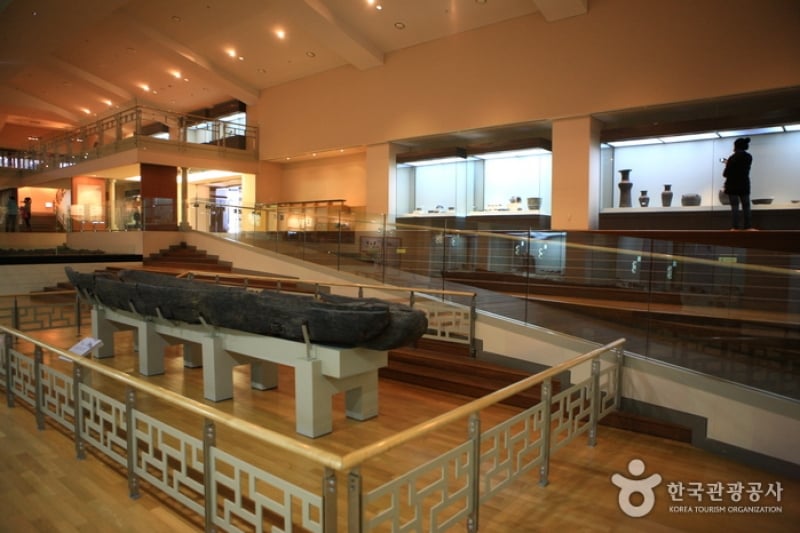
Image credit: Korea Tourism Organization
If you only have time for one-stop in Gyeongju, let it be the Gyeongju National Museum! Here, you’ll be able to fully appreciate and understand the significance of the ancient capital city of Silla all in one sitting. While the main archaeological hall showcases remarkable weaponry and jewellery, we recommend you visit the Wolji Hall as it displays the relics excavated from the Wolji Pond that truly represent the luxurious lifestyle led by the elite of the Silla Dynasty.
Don’t forget to take a leisurely stroll around the museum gardens to see other historical displays and sculptures!
9. Train in the art of Sunmudo while staying at Golgulsa Temple
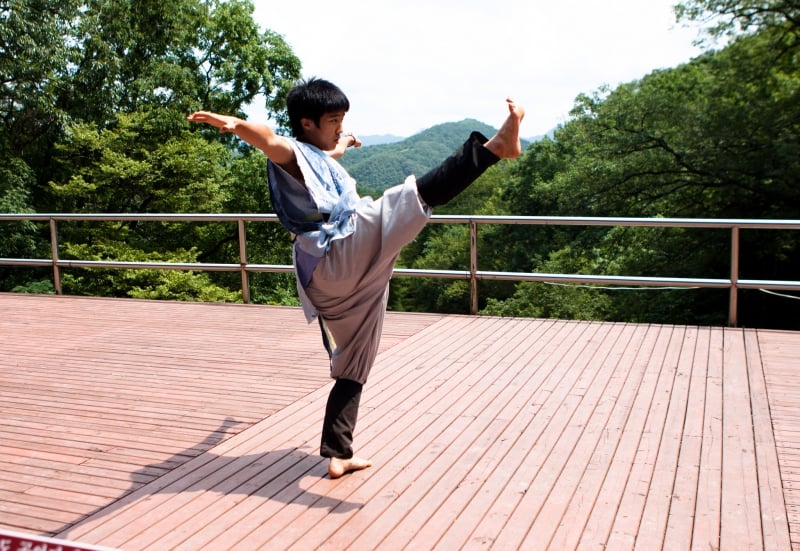
Image credit: Jirka Matousek
Perhaps a hotel or Airbnb just isn’t doing it for you anymore. Well, fret not! At Golgulsa Temple in Gyeongju, you can experience a one-of-a-kind temple stay and learn Korean Buddhist Martial Arts, Sunmudo, from Buddhist Monks themselves. This is the perfect opportunity to get away from the hustle bustle city life and find inner peace at this relaxing haven.
Golgulsa Temple is also unique as it is the only temple cave in Korea. This means that the Buddha sculptures have been carved out of the stone surrounding the temple, and you might have to climb through holes to view them!
10. Breathe in some fresh air at Mount Namsan
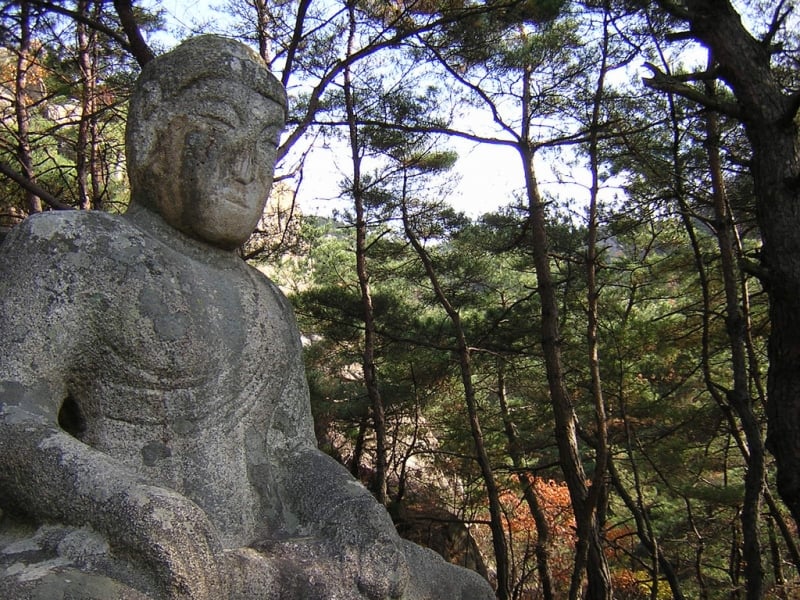
Image credit: MacKensie Cornelius
Ask anyone about what they think about hiking and more often than not, their responses would revolve around trees, walking and wildlife…not in Gyeongju though! There’s no escaping the historical influences of Buddhism, even when hiking up Mount Namsan in Gyeongju National Park. At every twist and turn along the forested trail, you’ll be greeted by stone sculptures of Buddha, Buddhist stone carvings, and even pagodas. Take the chance to explore South Korea’s only historical park and look out for other historical landmarks like Anapji pond as well!
Fun fact: In early Joseon, Neo-Confucian radicals hacked off limbs and heads of the Buddha sculptures in Mount Namsan, so don’t be surprised if you come across some of these headless sculptures!
11. Pop by Gyeongju’s largest traditional market
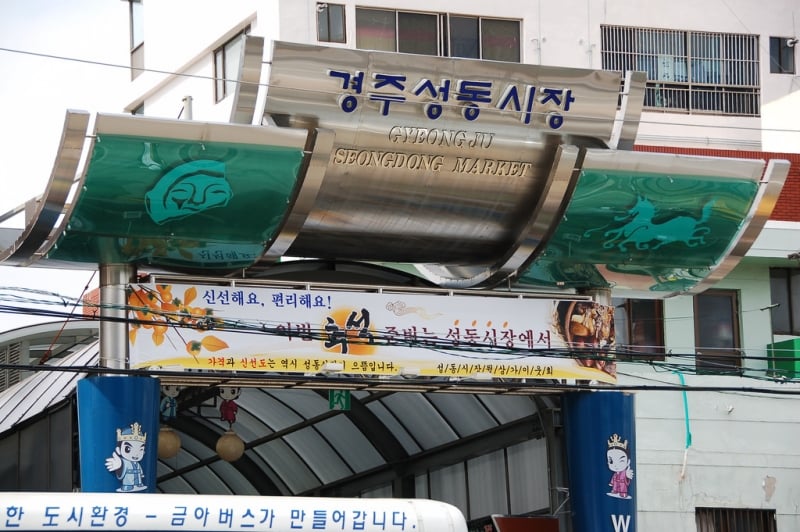
Image credit: riNux
No trip to Korea is complete without a visit to a traditional market! These markets are lined with vendors selling a mix of vegetables, fruit, meat and cooked food. If your stomach is empty after a day of walking around and looking at 1,000-year-old ruins and sculptures, simply pop into the market to grab a bite. With over 300 stores and 30 street vendors, we’re certain that you’ll find something to suit everyone’s taste there.
12. Get a taste of Silla Dynasty at Hwangnam
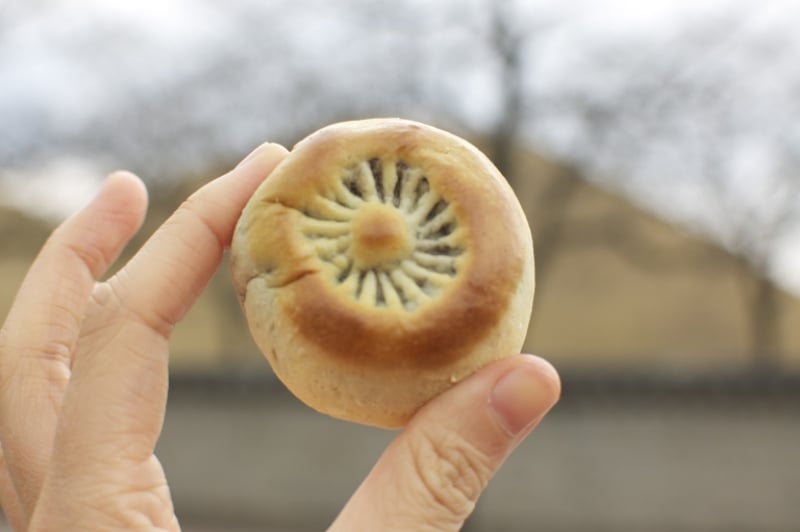
Image credit: Sooji Choi
The little wheel of goodness that you see in the picture is gyeongjubbang. Otherwise known as Gyeongju bread, this recipe has been around since the Silla Dynasty! With a thin outer skin and a filled center full of sweet red bean, these treats are best when they’re fresh from the oven.
Though several bakeries in Gyeongju claim they are the original founder of gyeongjubbang, locals stand by one particular bakery: Hwangnam Bread. Known for their creamy red bean filling that is naturally sweetened, this is the place to try gyeongjubbang. If you can’t get enough of this addictive sweet treat, we recommend buying it in boxes for (yourself) friends and family back home!
13. Recreate your favourite K-drama scenes at Shilla Millennium Park
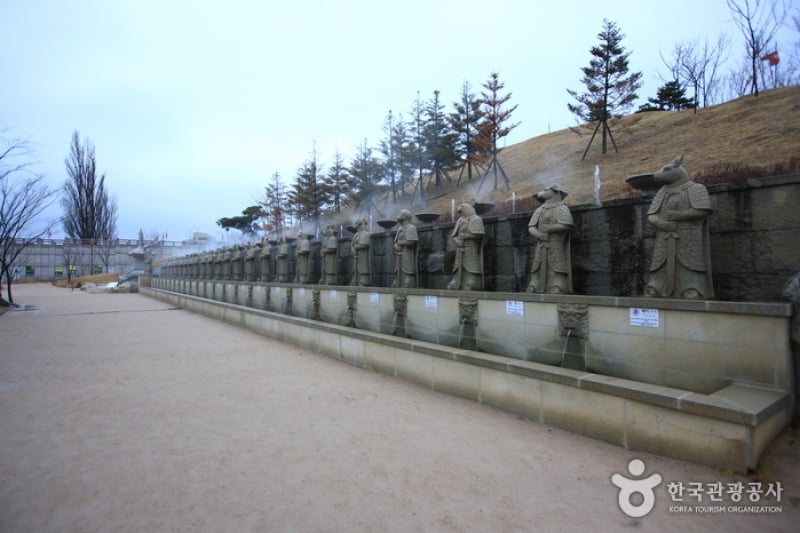
Image credit: Korea Tourism Organization
Fans of K-drama might recognize this place! The famous drama ‘Queen Seondeok (2009)’ which chronicles the life of the 27th ruler and first Queen of Silla was filmed here. Fans can visit the outdoor set which was built specially for the historical drama and relive the life of the Queen. Not only that, another popular high school drama ‘Boys over Flowers (2009)’ was filmed in the same park as well – this time, at the hanok hotel within the park.
But if K-dramas aren’t your thing, there is still tons for you to do at Shilla Millennium Park. Focusing on providing edutainment about the history and culture of the Silla Dynasty, visitors will have the chance to explore reproductions of Silla architecture and participate in Craft Clinics. It’s fun for the whole family!
14. Flock together with birds of a feather at Gyeongju Bird Park
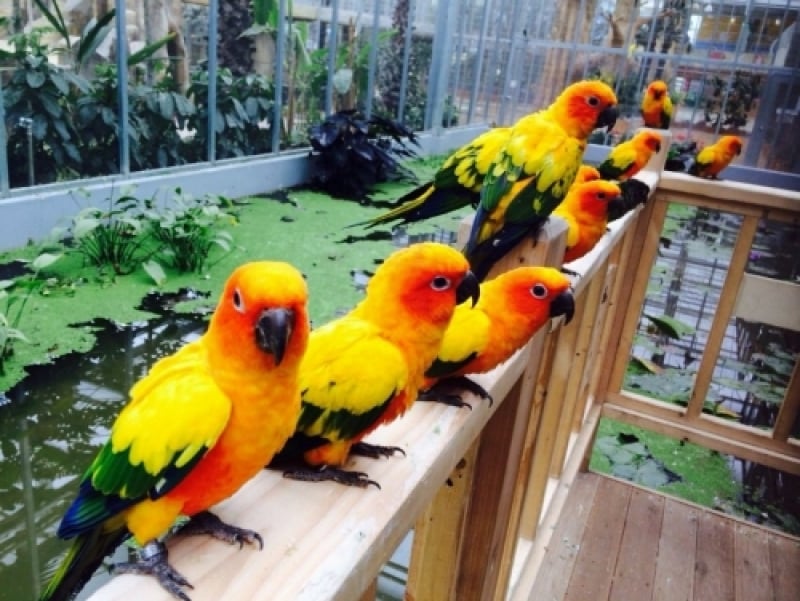
Image credit: Korea Tourism Organization
Ever had the chance to walk into a gigantic bird cage? Well, now you can! At Gyeongju Bird Park, visitors do just that. Unlike zoos where a protective barrier exists between the animals and humans, Gyeongju Bird Park is Korea’s first experiential park – allowing visitors to gain a unique and safe hands-on experience while mingling with colourful birds.
Within the two-storey park, the first floor is occupied by an ecology experience hall dedicated to birds and other small animals such as reptiles and fish. On the second floor, visitors can expect exhibitions and an experiential hall. If you’re lucky, you might even catch a glimpse of some rare animal species within the park!
15. Relax and rejuvenate at Gyeongju Spring Dome
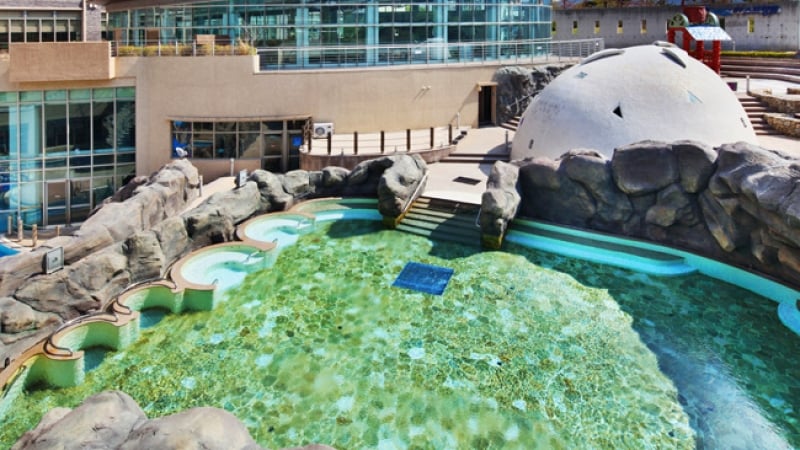
Image credit: Hanhwa Resorts
After a long day of sightseeing, there’s no better way to loosen the knots in your muscles than sinking into the hot springs at Gyeongju Spring Dome. Though it might look like your average water park at first glance, Gyeongju Spring Dome is in fact – a hot springs theme park! Using 100% natural hot springs water originating from 750 metres underground, the Spring Dome is open all-year-round, rain or shine.
Pro-tip: Kids can enjoy the children’s pool that is equipped with fountains and waterslides, while couples can check out the Lovers Spa that’s said to promote health!
16. Be awed by architectural marvels at the World Culture Expo Park
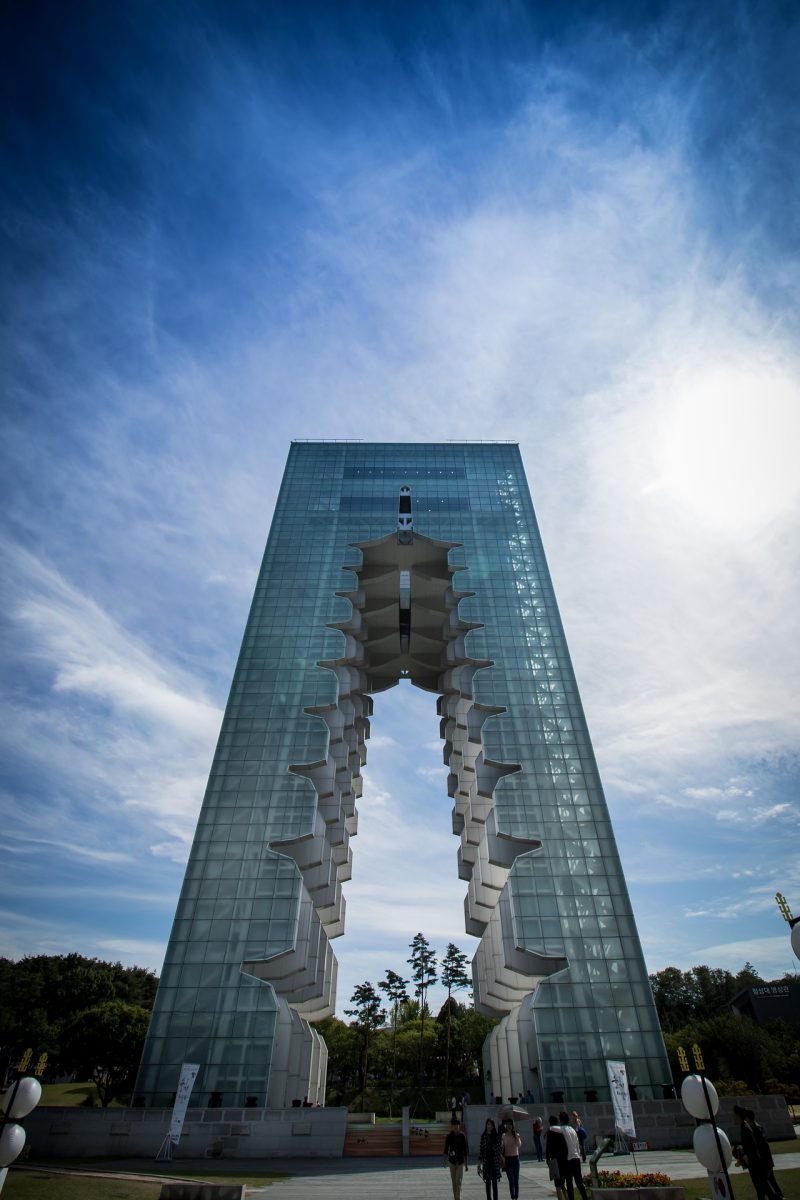
Standing at the majestic height of 182m, this uniquely tooth-edged observation tower makes for a fascinating photograph. Located within the Gyeongju World Culture Expo Park, Gyeongju Tower is surrounded by multiple other attractions though it should be noted that some are chargeable. Taking a virtual reality tour of Seokguram Grotto or hopping on the Silk Road Special Train are just some of the activities you can experience! This park showcases the way traditional and present Korean culture is in harmony with global culture.
17. Enjoy a meal fit for royalty

Perhaps as a vestige of being the capital of a century-long Silla Dynasty, many restaurants in Gyeongju tend to serve a whole ton of banchan (side dishes) with each meal. This is characteristic of hanjeoksik (Korean full-course meals) that are prepared in royal court cuisine due to the emphasis placed on balance, ensuring a wide array of banchan and main dishes that will keep royals healthy. Opportunities for such sumptuous meals are rare, so ditch that diet and eat your fill!
18. Celebrate your inner child at the Gyeongju Teddy Bear Museum

Image credit: John Menard
Blending modernity and tradition to use hundreds of teddy bears as a narration tool for the history of mankind and that of the Silla Kingdom, this museum is sure to be a hit with adults and kids alike! Featuring a 3D movie theatre, art gallery and even an underwater world exhibit, the Gyeongju Teddy Bear Museum is a fun and unique way to learn more about this historical city.
19. Get a blast to the past with a tea house experience

Tea drinking was one of the favourite pastimes in the royal courts and where better to recreate this experience than amidst the ruins of the Silla Dynasty? While tea drinking is still popular in Korea today, get the authentic tea drinking experience at a traditional tea house, many of which are situated in the heart of Gyeongju and travel back in time with your aromatic infusion!
20. Wash your worries away at Gampo Beach

Image credit: Korea Tourism Organisation
Gampo beach offers the perfect getaway from the city and is the panacea for all your cares. Overlooking the East Sea, this beautiful beach allows you to unwind and relax to the rhythmic sound of waves. Pop over to the nearby fishing village well known for their crab and indulge in a lavish seafood meal!
With all that has been said, Gyeongju should definitely be on your bucket list of places to visit, especially so if you’re a history buff. The alluring charm of the city lies in its ability to transport you a thousand years into the past and see how things were like when the Silla Dynasty ruled.
But even if history isn’t your cup of tea, Gyeongju is the perfect getaway from the city to simply relax and unwind. Whether it is hiking up Mount Namsan or taking an invigorating soak at the hot springs, there’s a little something for everyone.





